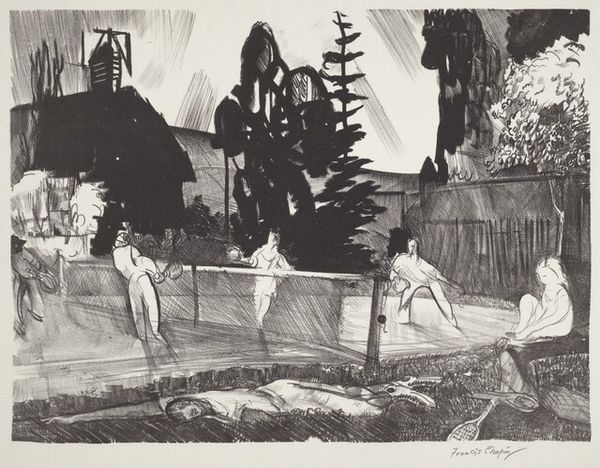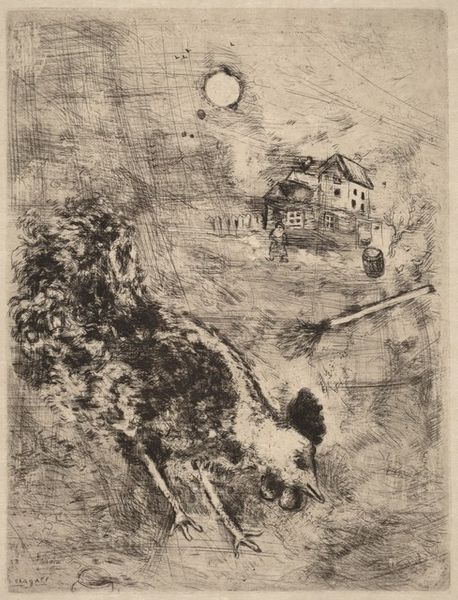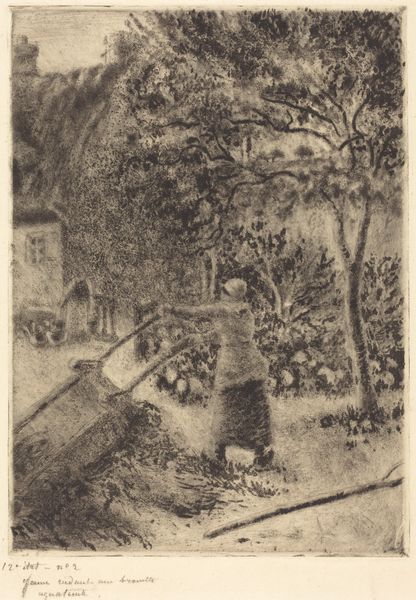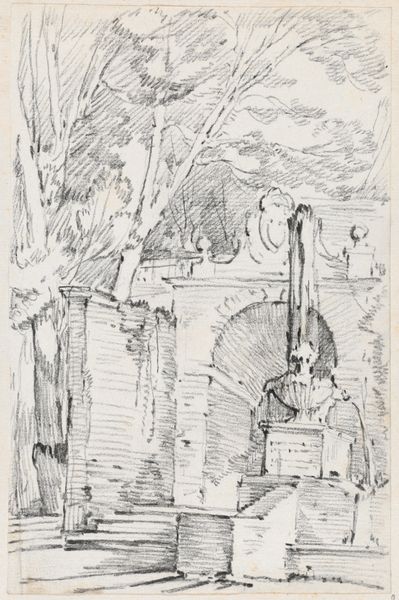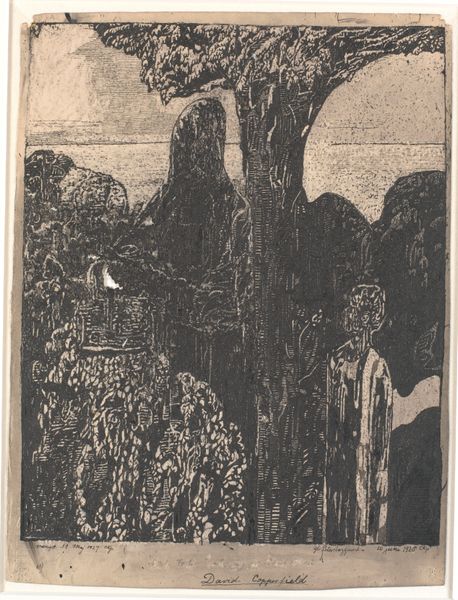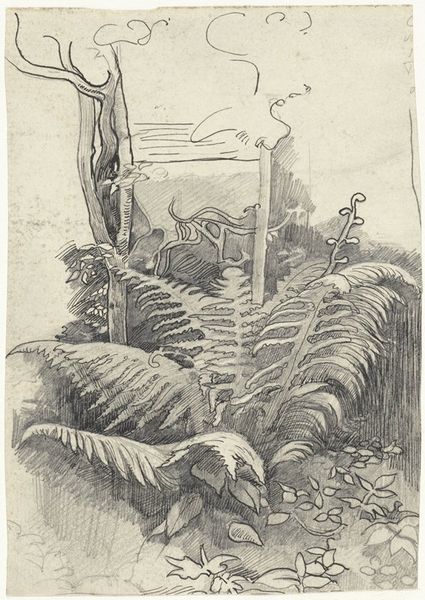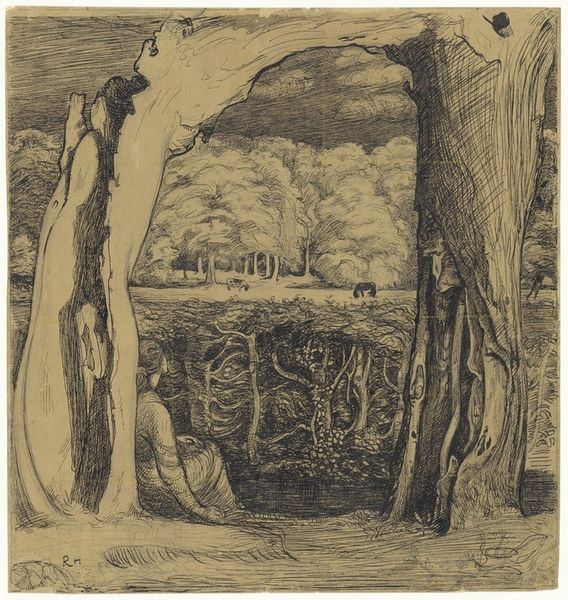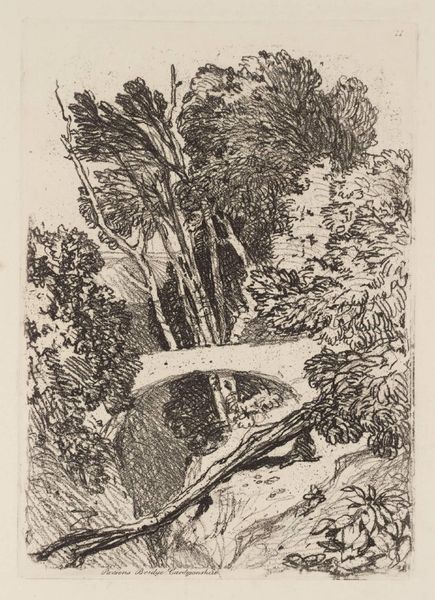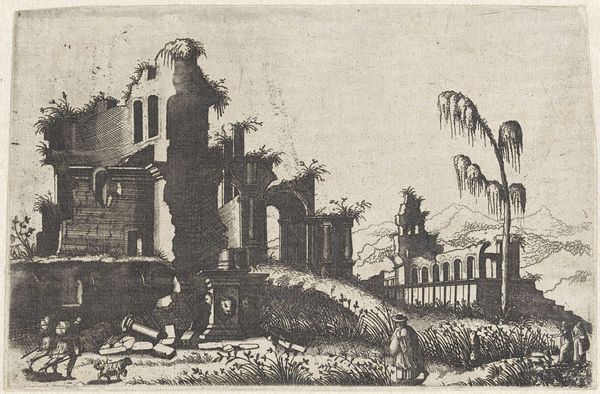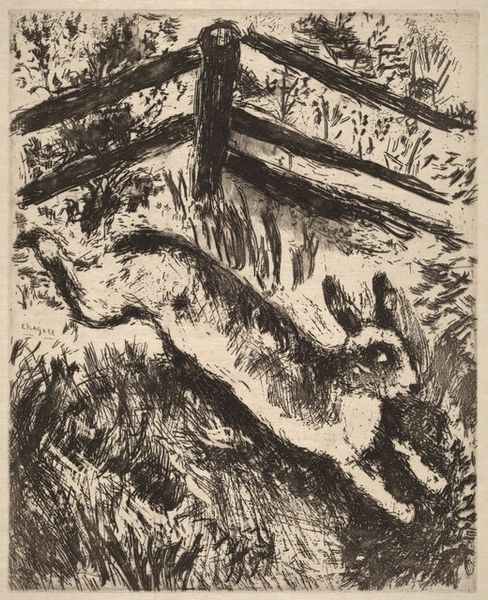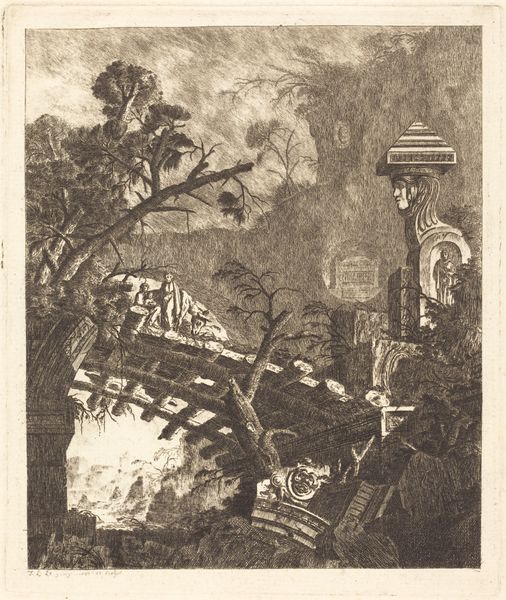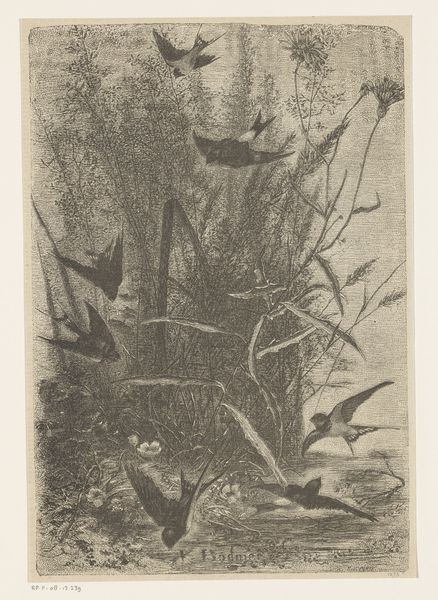
print, etching
#
cubism
# print
#
etching
#
landscape
#
figuration
#
pencil drawing
#
geometric
#
modernism
Copyright: National Gallery of Art: CC0 1.0
Editor: So here we have Marc Chagall’s etching, "The Earthen Pot and the Iron Pot," made sometime between 1927 and 1930. It’s a very busy composition, with lots of rural imagery. But somehow, it feels more like a memory than a depiction of real life. What do you see in this piece, Professor? Curator: Ah, Chagall. He stirs my soul. Look closely – do you see how the textures are built? That's no mere description of a farm. He’s inviting us into his mind. It's about memory, yes, but more than that, it's the feeling of being in that memory, fragmented and reassembled. The objects, like the pots themselves, aren't just still life elements. They are stand-ins. For people, maybe? Relationships? Think of an earthen pot – fragile, humble. Now imagine an iron pot. Heavy, resilient, maybe even a little…imposing? What does that contrast evoke for you? Editor: That makes me think of class differences, or maybe even tensions between tradition and modernity. The rustic scene clashing with more industrial objects… Is that what he intended? Curator: Intention is a funny thing with Chagall. He's not writing a thesis, he’s singing a song. But your interpretation resonates! Consider his background – rooted in a Hasidic community in Belarus, later thrust into the art world of Paris. That push and pull informs everything he creates. It makes me wonder… Do you feel that same tension in your life? The grounding of the past versus the pull of the future? Editor: Definitely! It gives a whole new layer to the picture. It’s not just pretty chickens and pots anymore. Curator: Exactly! Art isn't about answers; it’s about the questions it unlocks within us. Editor: Well, I'll definitely be looking at Chagall differently from now on. It’s funny how a couple of pots can contain so much!
Comments
No comments
Be the first to comment and join the conversation on the ultimate creative platform.
